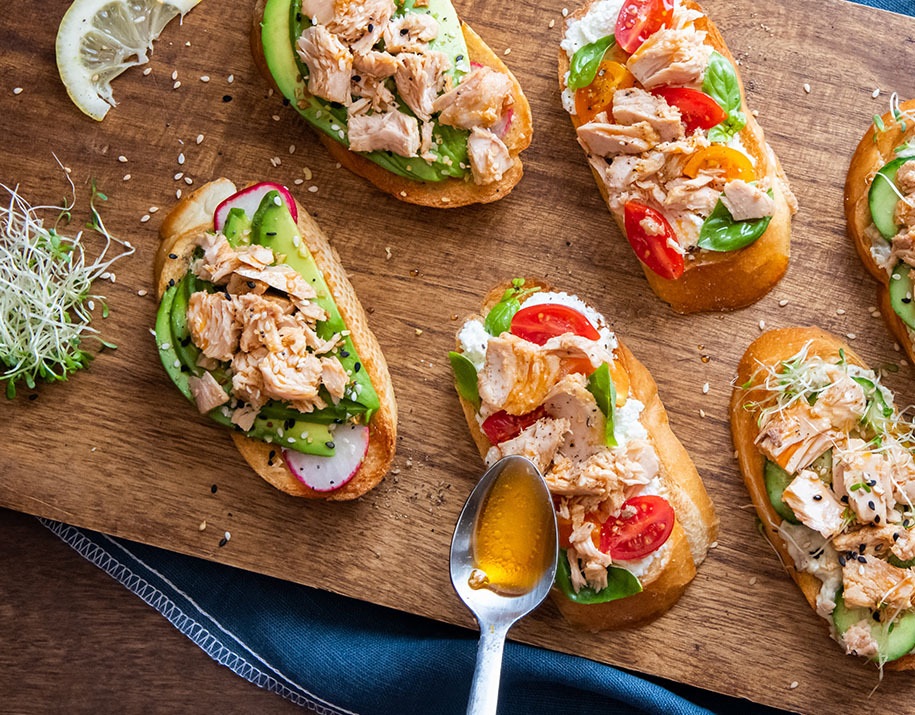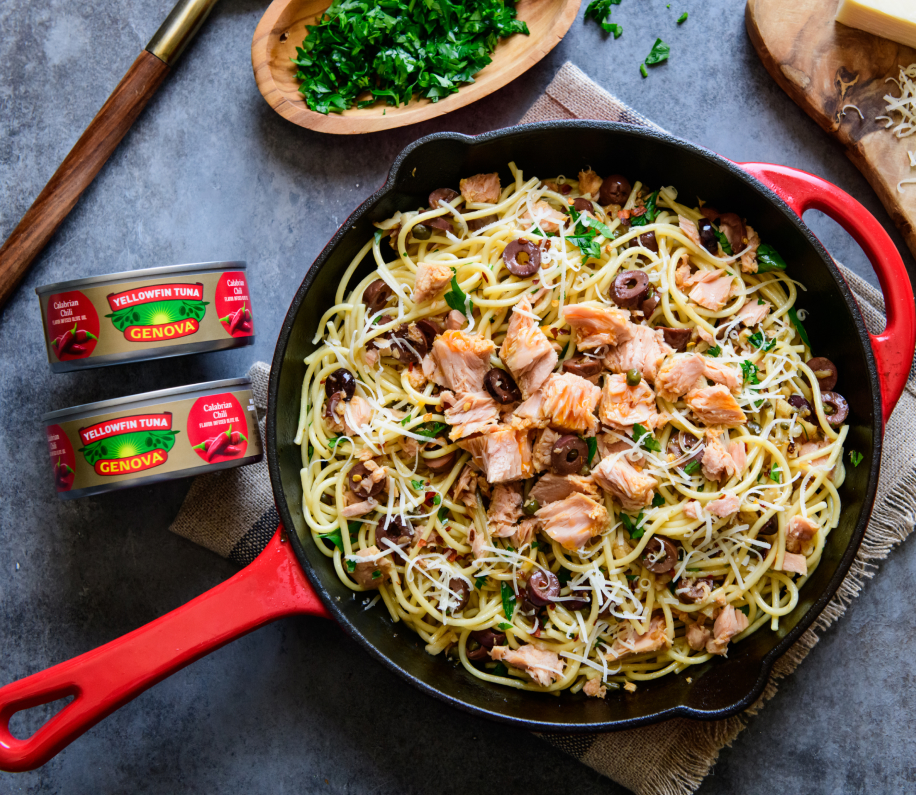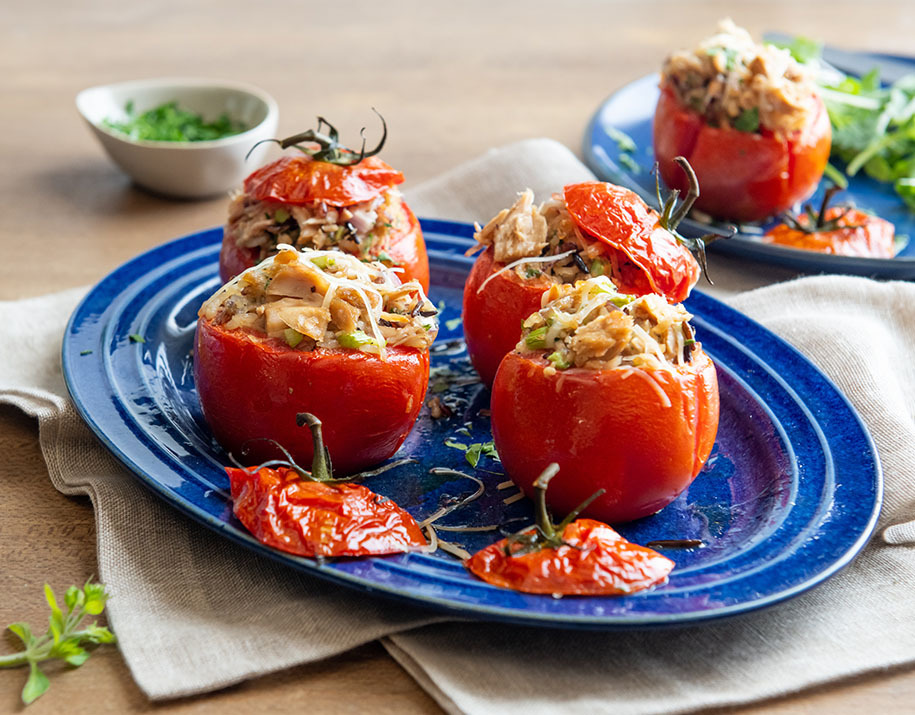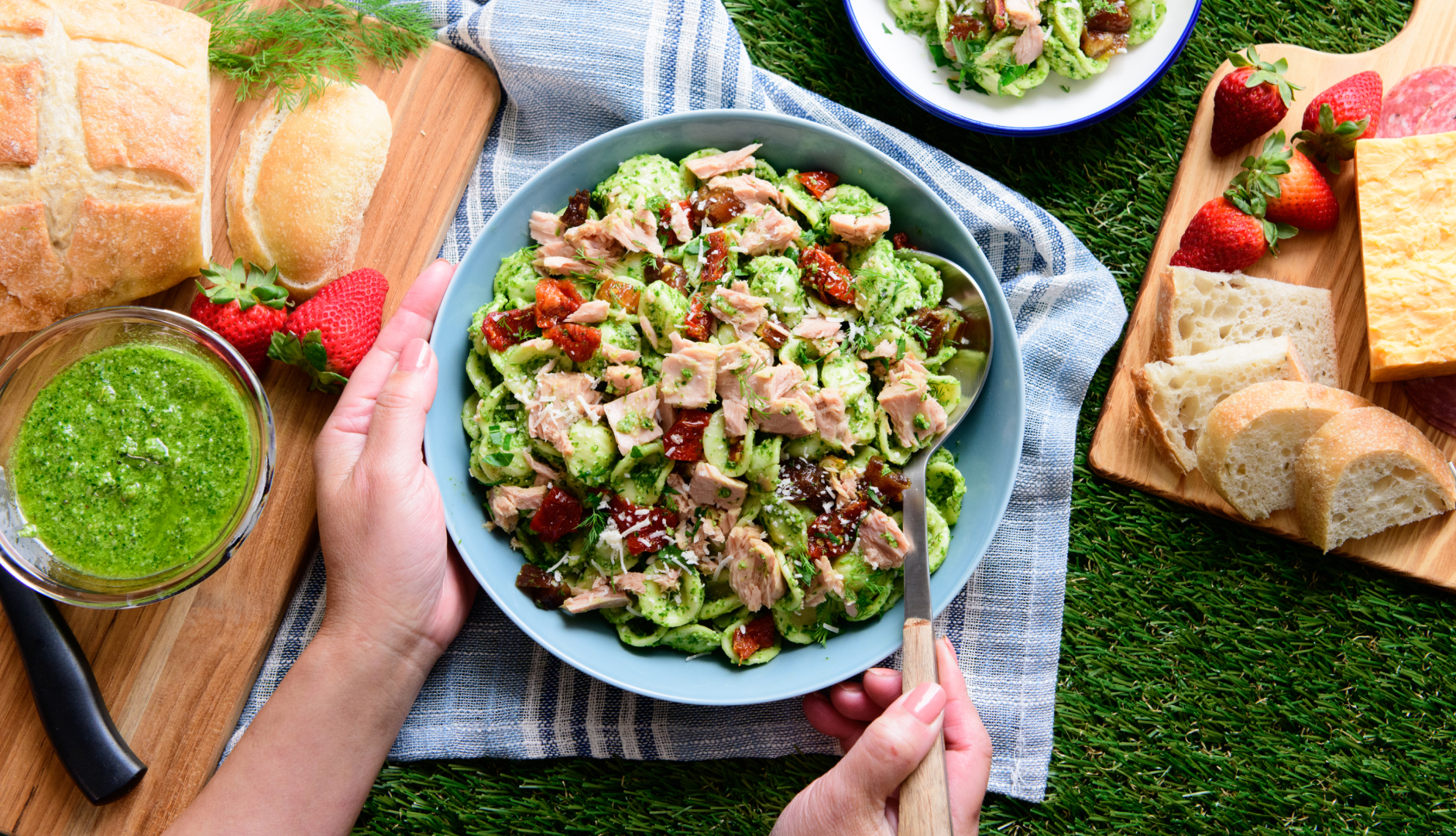Celebrate the Feast of the Seven Fishes with Genova

Italian-American culture is nearly synonymous with big family-style meals lovingly prepared by hand, and there may be no better example than the Feast of the Seven Fishes (or Festa dei Sette Pesci in Italian). When southern Italians began immigrating to North America en masse in the late 19th century, they brought this traditional Christmas Eve celebration with them. The tradition is simple: On Christmas Eve, you eat seven different dishes, all made with some kind of fish or seafood.
So why eat fish—or, more specifically, why eat seven of them? The first question is easy to answer: It’s Roman Catholic custom to abstain from meat on Christmas Eve. (Meat is traditionally reserved for Christmas Day celebrations.) But fish is not meat—at least not in this instance—making it fair game for a Christmas Eve dinner. As for the number seven, it’s not exactly clear where it came from, and it’s not an unbreakable rule, either. Some families stick to seven dishes for tradition’s sake; others prepare fewer dishes, or more.
You don’t have to be Italian or Catholic to celebrate the Feast of the Seven Fishes; you just have to like seafood. Here’s our take on a Seven Fishes menu featuring Genova tuna in all its glory—and structured in courses just like they do in Italy. It’s an undeniably sophisticated, fun, and above all, delicious way to celebrate Christmas Eve.
Aperitivo
The traditional starting point of an Italian meal is the aperitivo course, which consists of bubbly alcoholic beverages like prosecco or champagne and small snacks. Beginning the meal with an assortment of nuts, cheeses, crackers, and olives will give your guests something to nibble on with their bubbles—and get them ready for the many dishes (and glasses of wine) to come.
Antipasti
After the aperitivo comes the antipasti course. “Antipasti” literally means “before the meals,” and as you might expect, this course is all about appetizers. Our Cheesy Tuna Arancini are an excellent Feast of the Seven Fishes antipasto: Golden brown on the outside and oozing with mozzarella cheese on the inside, they’re absolutely worth the effort of deep-frying. We recommend pairing those hot, crispy arancini with a cold antipasto like our Calabrian Chili Tuna Crostini for balance.

Primi
Next up: Pasta. Although the primi course can include non-pasta dishes like risotto or soup, pasta dishes are so important to the Feast of the Seven Fishes that we chose two for our menu. The intensely savory pasta puttanesca features heavily on this particular holiday; our Calabrian Chili Tuna Pasta Puttanesca adds premium Genova tuna to the anchovy-caper-olive trio that gives the dish its iconic flavor profile. For a lighter—and utterly delicious—foil to puttanesca’s intensity, we recommend our Yellowfin Tuna and Artichoke Pasta. It combines caramelized baby artichokes, yellowfin tuna, mint, parsley, and pistachios in a garlicky, lemony white wine sauce; it may be lighter than puttanesca, but it won’t fade into the background.

Contorni
Typically, after the primi comes the secondi, which functions like a “main course.” However, many secondi courses feature meat—a dealbreaker for this particular feast—and with two pastas for the primi, a traditional “main” isn’t strictly necessary. Instead, it’s time to move onto the contorni, or side dishes.
Contorni are usually vegetable-forward and served alongside the main dish. Our Roasted Eggplant with Tuna and Ricotta is a substantial side dish with an elegant presentation that’s sure to wow your guests. Following the theme of stuffed vegetables, we think our savory, hearty Garlic & Tuscan Herb Stuffed Roast Tomatoes make perfect sense next to the stuffed eggplant. Whether you serve these vegetable dishes with the pastas family-style or save them for a separate course, they’ll add some welcome freshness and brightness to the meal.

Insalata
Before the meal formally begins to wind down, there’s one last meal course: Insalata, or salads. The seventh and final fish on our menu is our Shaved Fennel and Tuna Salad. It’s fresh, it’s crunchy, it’s lemony—everything you want after an extravagant meal. Plus, winter is peak fennel season, so you should be able to easily find the perfect bulbs for the perfect salad.

Formaggi e Frutta
The cheese and fruit (formaggi e frutta) course signals that the meal is starting to come to a close. Serving small portions of good cheese paired with fresh, dried, and/or preserved fruits is a simple, elegant way to prepare your guests for dessert. Or, if you prefer, you can always skip a formal dessert course and just have fruit and cheese—but why would you skip dessert on Christmas Eve?
Dolce e Caffè
No holiday meal is complete without dolce, a.k.a. dessert—although you may want to skip the fish for this particular course. For an extra authentic touch, brew strong coffee or espresso (caffè) to go with your sweet treats.
Digestivo
To cap off a luxurious multi-course meal, it’s traditional to serve your guests a digestivo, or an alcoholic after-dinner drink believed to aid in digestion. Depending on your and your guests’ preferences, you could choose something sweet like limoncello or an amaro, or something bitter and bracing like grappa, Sambuca, or Fernet. Either way, a little digestivo is the perfect end to a perfect meal—whether or not it actually helps your digestion. Buon appetito!


